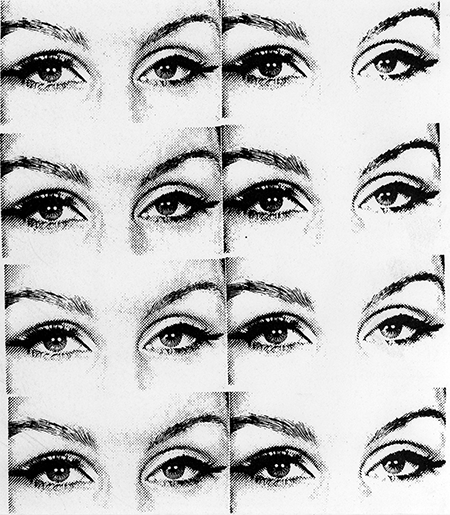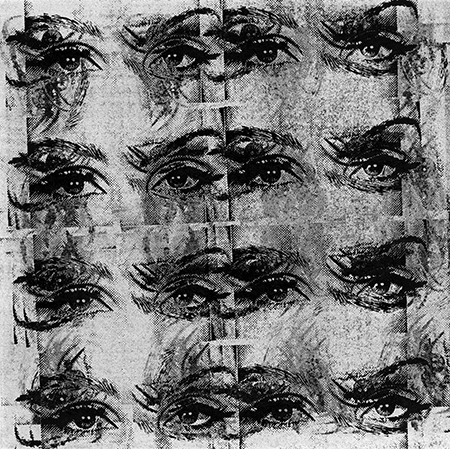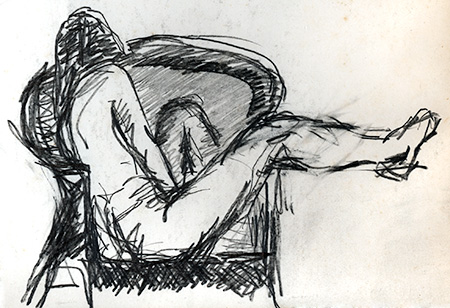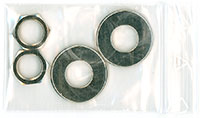


Unpopular Opinions from Charles Eicher



Last year I did some life drawing sessions with a local artist co-op. It had been a long time since I did life drawing back in art school. I forgot how much I enjoyed it, and I discovered how much I had improved since I was a student.
A few days ago, a friend asked to see my drawings. She loved them, she said, “now draw me!” and took off her clothes. I did a few quick sketches in soft graphite, she liked this one the best. I always have problems drawing accurate portraits that look like the model, but despite my very rough drawing, she said it looks just like her.

She couldn’t sit still for more than about 5 minutes, which makes it hard to fix all the details. But for the short time she modeled, this is a fairly good effort. That was always my problem in the drawing sessions, I wanted to do 30 minutes per pose, everyone else wanted 5 minutes. I like to work longer sessions, that’s probably because of my painting background, I take longer to work out all the details. But it’s hard to find models that will sit for an hour, day after day, until a painting is finished.
This drawing is about 8″ x 14″ and was done in graphite stick, with lots of smeary erasing. Graphite stick is really versatile, but alas, you can’t see its best qualities just from a low rez scan. It can be shiny or matte, smooth or rough. In a lot of these forms, I’m trying to just “suggest” the form rather than make it clear. This type of drawing relies more on the energy and expressiveness of the line and shading, rather than accurate draftsmanship. I captured a few important anatomical features that help create the shape, but only as minimally and as sketchily as I can. I am rather pleased with this drawing. I can see a few things I’d like to fix, but inevitably, I always ruin a drawing by trying to fix it after the fact.
I was going through some folios of old artwork and found this little sketch from my oldest Life Drawing classes. This must date to around 1976. I was a total rookie at drawing, this is kind of embarrassing, but I can see some good qualities here. This sort of artwork would be considered “juvenilia,” work done as a young artist who hadn’t quite figured out what he’s doing.

Now obviously I’m struggling here with the proportions of the leg, there are some erasures and I probably had it better before I erased it. The leg and torso are presented flat in the picture plane, so I did have some sort of idea of what I was trying to do with this drawing. The left leg also has problems, but it is shaded in a way that pushes it back from the picture plane. You can see it took me a couple of tries to get the round shape of the wicker chair, but it’s shaded rather nicely. There are two or three different pencil hardnesses in use here.
But I am rather more pleased with the torso and shoulder, the proportions are right and it forms the front plane with the leg. It’s hard to indicate the roundness of forms when you draw in these sketchy strokes, executed so rapidly. But the sketchy strokes work well when just suggesting the shape of a shoulder blade, the shadow under the upper arm, or the shape of the hips and buttocks. The round curves in the back of the chair pull the picture inward, while the square front of the chair helps establish the front plane of the model.
The problem with this sort of life drawing is that the poses are only a few minutes, so you don’t have time to work everything out. The classes are designed to help you work out your issues with proportion and lighting, but you can only work on a couple of things in a single drawing. It’s almost impossible to get it all right.
This drawing is about six inches across, in the corner of a large 18 x 24 inch sheet of paper. The full page is taken up by an unfinished sketch in large, rough, black chalk, working out the composition. It is obviously abandoned but has the same composition as the sketch. I can tell I did a quick chalk sketch but didn’t like it, and didn’t want to waste the whole sheet of paper, so I did this little sketch in the corner.
I am not an artist with natural draftsmanship skills, it’s hard work developing those skills. I still have poor draftsmanship, which is pathetic because I have a BFA degree in Drawing and Painting. Obviously being unable to draw well is not an obstacle to an art degree in Drawing. I recently did some Life Drawing studio sessions and I can tell I still struggle with the same problems of body proportion and how to convincingly portray it. Now I have other qualities that help my drawing rise above the level of just another poor draftsman, and I can see some faint impressions of my current drawing methods in this old drawing. That’s why artists sometimes keep juvenilia, to compare it to their current work, and see where they came from.
Last winter, I caught the Swine Flu, I was sick for a whole month. I went to the doctor, they took my temperature, it was 96.5F. I didn’t know your body temp could drop like that, I asked the doctor about it, he said, “it’s within a normal range.” Ever since then, my average normal body temperature has been 96.5F.
This winter, I caught a terrible cold, I’ve been sick for over a month. I went to the doctor, my body temperature was recorded at 93.5F! I thought any body temp that low meant the time of death was within the last 4 hours. At one point, I had a terrible fever, my temp shot up to 97.5, I felt like I had a fever of 104. But I must be getting better, my temp has stabilized back to 96.5.
Next winter, I hope I don’t get a cold like this. I don’t know how much lower my body temperature can get. I’m already at the edge of hypothermia.
I have a problem with socks. I have a problem with women and socks. I remember once I was doing the laundry and I found a lost sock. It was a little women’s footie, I thought maybe my girlfriend left it behind, it was the kind of socks she wore when working out.
So the next time she came over, I gave her the sock. She looked at it and was immediately enraged. She said, “This isn’t my sock. It must be your other girlfriend’s sock,” and she stormed out the front door. I was stunned, I had plenty enough problems with this one girlfriend, I sure didn’t have (or need) another one. But she was convinced another woman left it at my house, and she wouldn’t speak to me for a whole month. The sock’s original owner is unknown. I can only guess that it was left behind in a dryer in the laundromat, then I threw my laundry in that dryer.
That was years ago, but I’ve had some recent sock problems too. A woman friend came over last winter on a cold, wet day. She asked if I had any dry socks. I gave her one of my best pairs of socks. I had two identical pairs of my warmest socks, big thick black woolen winter socks, I wore one pair and she wore the other. She wore them home and I never got them back.
Now the other pair of black woolly socks is gone too, thieved by another woman. Another friend came over and threw her jacket down on the floor by my shoes and socks. For reasons I will never figure out, she took my socks when she picked up her jacket and left. I asked her about it, she said, “oops, I just swept up my jacket and stuff and I guess I grabbed your socks too.” I demanded the return of my favorite socks. She said it was too late, she was doing laundry for someone else and gave my socks to them. No getting them back. Now I have no good winter socks at all. And someone else is now wondering where the hell this pair of rogue socks came from.
Update: Sox 3, Charles 1. I found a third pair of my favorite black socks. So now I have the one pair left.
Never anthropomorphize computers, they are inanimate objects. Never treat computers as if they have human feelings and emotions, they don’t like it.
I’ve previously written about my Dieffenbachia plant, I’m rather proud of it. It keeps getting overgrown, so it falls over and breaks off. Then I take cuttings and start all over again. Each new generation is a clone of the previous one. This plant could be immortal if I just kept cloning it forever. But it almost died out.
When I last wrote about my houseplant, it was Version 3.0. I had already started over two times, it was the third generation. A few months ago, it grew too tall and broke off again. I started Houseplant 4.0, but it was unsuccessful, it did not take root. Fortunately, I kept a backup of Houseplant 3.0. I kept one stalk of the broken plant growing, just in case 4.0 failed. And it did fail. So I cut the stalk into segments and buried them, to start new cuttings. Two of these segments almost completely failed, but two more were very successful. Here’s a picture of the plant after spending the summer growing outside on my deck.

But the plant is a mess. All the new shoots are crammed together in a row. If I leave them like that, they’ll crowd each other and break off easily. They need to be spread out around the pot, to make it look fuller and more attractive. So it is time to traumatize this plant by digging it all up, cutting it apart, and repotting it. This picture shows the cuttings after I carefully dug them up.

You can see two big stem segments with two new shoots, I can cut those apart so each shoot grows separately. In the lower right, there are two small shoots, that’s all that’s left of a couple of 6 inch long segments. They almost completely rotted away, but new little plants are just starting out. They’re several months of development behind the big shoots, but they’ll work well to fill out the plant once they get going. Here is the final result, after repotting. You can see one little leaf of a new shoot in the lower right.

In a month or two, this will all be filled out and much taller. It will eventually grow to about 5 or 6 feet, then fall over and break off again. Then I can start on Houseplant 6.0.
One of the reasons I like this dieffenbachia plant so much is the variegation. It has an interesting pattern of different intensities of green. Mathematician Alan Turing wrote extensively on the organizational structures of these patterns. He called the growth of these patterns “morphogenesis” and developed mathematical functions to describe their growth as a “reaction-diffusion” system. In more modern mathematical terms, we might describe these patterns as having been generated by cellular automata. These are essentially two different ways of viewing the same problem; Turing viewed it as an analog system, cellular automata are digital systems. But I prefer Turing’s system. I think cellular automata are a cheap trick, they’re for people who are too lazy to go to the trouble of understanding Turing’s math.
A few months ago, suddenly I could not play my guitar because it was missing a small part, a tiny metric lock-nut. And that is the beginning of a long, strange story.
I purchased my first new guitar in 1976, a Gibson Les Paul Deluxe. The Deluxe was the low end of the Les Paul line, I couldn’t afford the Standard or the Custom. But it was a fine guitar, it was a real Les Paul, even if it had cheaper pickups than the other models. I worked all summer mowing lawns and sweeping floors, I finally raised enough money and bought a nice Les Paul Deluxe I found at West Music for about $675. I also asked the store to make one tiny customization to the guitar, it had really cheap tuning pegs, so I had them replaced with high quality Schaller tuning pegs, for about another $50. With the addition of these precision German tuners, this was a professional quality guitar I would keep for the rest of my life. I couldn’t play guitar worth a damn, but I figured I’d grow into this instrument as my skills improved over my lifetime.
Here’s a picture of a Les Paul Deluxe just like mine that I found on the web:

When I moved to Los Angeles in 1982, of course I took my guitar with me. I played and practiced my guitar a lot, but I still wasn’t very good at it. Then tragedy struck, my beautiful guitar was stolen. My stupid girlfriend had a friend of hers come to visit, he wanted to crash on the couch overnight. I didn’t want him to stay, but she insisted, and I couldn’t talk her out of it. When we got up in the morning, he was gone, and so was my guitar. That’s why I didn’t want him to stay overnight, I figured something like this would happen when I heard him describe how he funded his cross-country travels by shoplifting at KMarts and using phony receipts to get cash refunds on the stolen goods at the next town’s KMart. Strangely, he took only the guitar and left the empty case behind.
I called the police to report the theft. To my dismay, my stupid girlfriend insisted I report the one other item he took, a hand carved Japanese wooden dildo. This insured the LAPD would not take my theft report seriously. The LAPD officers scoffed at the report of the stolen dildo, they seemed amused by my embarrassment and enjoyed humiliating me.
I never heard back from the LAPD but I hoped that my guitar might turn up in a pawn shop or guitar store, they’re required to report serial numbers to check against the “hot sheet” and to return the stolen items if there’s a match. The stores don’t have much incentive to work with this system, every match means they have to give up an item they bought, and the thief gets away with the money.
Several years later, I was walking down the street near my office in Van Nuys, I walked past a pawn shop, and there was a Les Paul Deluxe in the window. It was the same color as mine and everything matched. I didn’t want to alert the shop, so I went to the LAPD Hollywood Division, where the theft was originally reported. I told them I thought I’d located my guitar, could they please check it out? They checked some records and then told me the guitar at the pawn shop was not mine. They said my guitar had already been recovered long ago. I was baffled, but the LAPD Detectives absolutely refused to help me any further, and wouldn’t say why.
I had some difficulty working my way past the detectives, but finally I reached a Lieutenant. He checked it out and discovered my guitar had been found about a year after the theft, it was bought by The Guitar Center, just 2 blocks from my home. The LAPD Detectives tried unsuccessfully to contact me to help me reclaim my stolen property. I had moved since the theft, but the theft report had my office phone number, and they still couldn’t find me. So they gave up and my guitar became the legal property of The Guitar Center.
I suddenly recalled an incident that puzzled me at the time. My boss told me, “hey Charles, the cops called looking for you, but I told them I never heard of you.” I wondered what that was about, I wasn’t ducking the law for any reason, and it had been so long since the theft, I didn’t connect it. My stupid boss thought he was doing me a favor, shielding me from the cops, but instead, he blocked the one chance I had to recover my guitar.
The Lieutenant called The Guitar Center, but there wasn’t much hope they would still have my guitar, several years had passed since they took possession. But they still had it in their warehouse, unsold. The Lieutenant suggested I try to purchase the guitar back. I went to The Guitar Center, they located my guitar and I confirmed it was mine. They offered to sell it back to me for what they paid for it: $200. I was broke and unemployed, I barely had money to eat, let alone buy back my guitar. I was despondent. My beautiful guitar was right in front of me, but I couldn’t get it back. Stalemate.
A few days later, my sister Janet heard me whining about my stolen guitar, and she did a truly wonderful thing. Christmas was approaching, so she secretly negotiated with The Guitar Center, and got my Mother to buy it back as a surprise christmas present. My Mom wired the money to my sister, and at about noon on December 24, she phoned me, told me to come pick up the $200 and go buy my guitar back, but I had to do it today, before the holiday, because someone else wanted to buy it. If I didn’t pick it up immediately, they’d sell it out from under me.
I was across town from my sister’s place, traffic was snarled on christmas eve, it took me hours to go pick up the money and get to The Guitar Center. I got there at 4:45, just before closing time. Stevie Wonder and his entourage were in the store shopping for keyboards, the shopkeepers were fawning all over him, it took a bit of effort to get someone’s attention. I told the clerk why I was there, he knew about it, and went into the back room and retrieved my guitar. He placed it right in front of me, and asked for $250. I was enraged, he welshed on the deal. I figured that he planned on pocketing the extra $50 for himself. The $200 was every cent I had, I couldn’t pay more, but I knew just how to take care of this.
I started yelling, deliberately loud enough so Stevie Wonder could hear me. I figured the store wouldn’t want to look bad in front of a celebrity musician and maybe blow a big sale over a measly $50. I yelled, “you already agreed to sell me back my stolen guitar for $200, and now you want $250?” I paused for a moment to see if Stevie was listening, and he was, every person in the store was listening. So I laid it on thick, “you’re trying to gouge me for another $50 on christmas eve? It’s bad enough that I have to buy back my own stolen property. Now you’re trying to steal another $50 from me! I want to talk to the store manager right now! I want my stolen guitar back for the price we already agreed on!”
This obviously worked because a guy broke away from the Stevie Wonder entourage, and introduced himself as the manager. I explained the situation and he glared at me, he knew what I had just pulled off, but he took my $200 and gave me back my guitar. I ran like hell out of there and went home with my prize.
When I finally got home and inspected my guitar, I was horrified. The guitar was all banged up, it had no protection since the thief didn’t take the case with him. The front had a big ugly dent in the shiny varnish. The back was all dinged up, that’s known as “buckle rash.” Whoever had this guitar for a year had a big belt buckle that repeatedly scraped the back when he played, oh it was ugly. I had kept my guitar in pristine condition for years, I would even pull my shirttail over my buckle to protect it from buckle rash. And now some unknown person had screwed it all up. And worst of all, there were these stupid gadgets attached to the posts where the guitar strap attached. They were called “strap locks.”
One of the notorious problems with the Les Paul models is that the guitar strap always slips off the top attachment post, the guitar can drop right out of your hands and smash into the floor if you’re not careful. But I never used a strap lock, I’d never seen one before. I had a locking guitar strap that never pulled loose. But now I couldn’t use that type of strap, I had to deal with this stupid strap lock. I could never figure out why anyone would think this was an improvement, it had sharp edges and looked like it would eventually cut right through the leather strap.
Just a few months ago, in July 2009, that’s exactly what happened. The leather strap was now useless. Over 20 years or so, I used the same leather strap, but it got shredded and now the strap would fall off, despite the strap lock. This was worse than if it had no strap locks at all, I couldn’t play my guitar at all. I decided to take my guitar back to West Music, the exact same location I’d originally bought it, and test out a new strap on my guitar.
When I opened the case, the West Music clerk said, “wow, that’s exactly the same as my first guitar that I bought 30 years ago.” I told him how this was my first guitar too, and told him my story. He decided to help me out in selecting a new strap. But when he inspected the guitar, he said, “here’s your problem, your strap lock is missing a washer and a lock-nut that holds down the strap. You don’t need a new strap, you just need a new washer and nut.” Those parts weren’t on my guitar when I recovered it, I had never seen a strap lock before, so I never knew the parts were missing. I had been using the strap lock incorrectly all this time. No wonder the strap was worn through.
So I went over to the parts department to see if they had the nut, I could get a washer anywhere, but the nut had to match exactly. I was surprised when the repairman turned out to be the same guy who had set up my guitar and installed the Schaller tuners when I bought it in 1976. But times had changed, now West Music was no longer a Gibson dealer. He took a look at my guitar and snarled, “oh this is a Les Paul from the dark years.” Unfortunately it was true. In 1976, Gibson Guitar Co. was on the verge of bankruptcy, the guitars made at that time were notorious as the worst, most cheaply built guitars they had ever made. But I didn’t know that at the time. I was curious about the value of the guitar in the 33 years since I bought it. He estimated it was worth about $2500, which is exactly what my purchase price was equivalent to in 2009 dollars. My guitar wasn’t increasing in value, but at least it wasn’t decreasing, despite being an undesirable model from “the dark years.” When I thought about how much work I must have done to raise the equivalent of $2500, I was impressed with my younger self for working so hard.
But returning to the current problem, I asked the repairman for a replacement nut, and apologized that the part was probably worth less than a dollar and it would take him more than a dollar’s worth of effort to locate one. He rummaged around and tried several nuts, but after 20 minutes, he could not find one that matched. The only way he could provide the nut was if I bought an entirely new set of Schaller strap locks just like the ones I had on the guitar now. But I balked at paying $20 for a whole new set of hardware when I only needed the nut. So he suggested I check around local hardware stores for a match. Fortunately I could just carry the strap lock to test the fit of a nut, I wouldn’t have to lug around the whole guitar.
Over the next 2 days, I checked in every single hardware store in the area, and could not find a matching nut. I even checked a specialized fastener dealer that could get any nut made in the world, but only in bulk. They didn’t have a matching nut either. Apparently it had some odd thread pitch and was an obscure metric nut, their only solution was to order $50 worth of nuts in bulk. I was getting no closer to a solution. I wondered why Schaller would use a part that was so hard to replace. Perhaps this nut is common in Germany, but not here in the US.
There was nothing left to do but deal directly with Schaller. I looked on their website, I could buy a repair kit of assorted nuts at an outrageous price, but I could not purchase a single replacement nut. I thought perhaps a Schaller Authorized Dealer might have this kit and could sell me one nut. I checked their list of Authorized Dealers, I called all over the country, but none of them had this kit, or any replacement parts at all.
I decided to send a message to Schaller customer service via their website. I explained that I couldn’t locate the right part, and asked if I could purchase one individual nut. I waited for weeks but I got no response. And I still couldn’t play my guitar. I was frustrated.
So it looked like the only solution was to buy the whole damn strap lock kit, just to get the one stupid nut. I decided to check online, the kit usually sold for $12.95, I sure as hell wasn’t going to buy it at West Music for the exorbitant $20 they wanted. I went to Musician’s Pro Shop, they sold me a new kit for $13. They offered to remove all the old parts and put on the new parts at no cost. Problem solved, but at way too high a price.
I thought I would need a new guitar strap too, but I realized I could just cut off the end of the leather strap and punch a new hole. The strap would be a couple of inches shorter, but that was better than buying a new strap.
I was back in action. I played my guitar more and more, with the confidence that the strap would never fall off. I could even tap my feet, get into the music, and almost dance with my guitar, rather than standing there stiffly, hoping the strap doesn’t fall off if I move too much.
The very next day after I replaced the missing parts, I received an email from Germany:
Dear Charles,
we send to you the parts.
Best regards
Lars
Schaller Electronic GmbH
Dr. Lars Bünning
Geschäftsführender Gesellschafter
Managing Director – Owner
A few days later, I received this in the mail.

Inside the letter was another envelope.

And inside that was a tiny ziploc bag with two sets of washers and nuts.

I guess my plea for parts eventually got to the owner of the company, and he sent me the parts for free. I was so surprised that the owner would get personally involved that I didn’t even mind that I’d already paid $13 for a whole new strap lock kit. For this kind of customer service (even if it took a while) they deserved the money.
Now I play my guitar more than ever. I play so hard, I get overheated and sweat until my clothes are soaked through and I can barely hold my slippery guitar pick. My fingertips have thick calluses from hours of pressing against the strings. And my skills have improved so rapidly, I can hardly believe it. I am finally achieving the levels of guitar proficiency that I dreamt of when I first bought my Les Paul Deluxe in 1976. And unfortunately, this is one of the greatest tragedies in my life. But I will leave that story for my next essay.
P.S. Dear stupid ex-girlfriend: I know you read my blog. I wrote about this story at such length partly to show you how your stupid choices can have consequences that haunt people for decades. This is why I never speak to you.
P.P.S. Dear recent crazy ex-girlfriend: I don’t know if you read my blog, but I really wrote this story for you. You might remember when we were hanging out downtown at a cafe and I borrowed a stranger’s guitar so I could play you a song. That would have been the first time anyone had heard me play guitar in 20 years, and I asked you to be the one. I waited and waited but I couldn’t even get you to sit still long enough to listen. So I gave up, and gave the guitar back to the guy. Then you listened to him play you a song. When he was done, you finally asked me to play, but my moment was already over, you gave it to a stranger. I declined to play my song, and instead tried to avert my humiliation by explaining how excited I was to get my guitar parts and start playing again. You said I was “getting all pissy.” That was when I discovered you were completely oblivious to anyone’s feelings but your own. But just you wait, you will have your moment in the tragic Part 2 of this story.
I am outraged that the University of Iowa has, for a second time, selected architect Steven Holl to design a new building on the Arts Campus. Holl was previously commissioned to design the Art Building West to replace the old art building that was heavily damaged in floods in 1993. However, Holl disregarded the primary design goal, to build above the flood plain. In fact, he built it even lower than the previous flood-damaged buildings. He could easily have built the building a few feet uphill from its present site, avoiding the flood risk, but Holl fell in love with a pond on the site, and built the building at the level of the pond, well below the level of the flood plain. And of course the building was flooded and seriously damaged during the floods of June 2008. Now Holl is commissioned to build another Art Department building adjacent to the old building, just uphill, where he should have built the first building. Here is a photo of the old building during the flood, taken from the position of the new building’s site, notice that the new site is above the flood waters.

I attended the opening of Art Building West in 2006 and met Steven Holl. I intended to produce a full review of the building’s architecture and the architect, but I was so livid at the outrageous problems with the building, I decided to wait until I cooled off before writing my scathing review. But it has been years since the opening, and now I am angrier than ever. So I will have to write my review. It will take some effort to write it clearly when I am so angry at Holl, but let me preview the most salient point.
Holl’s distinctive architectural features, his staircases, are a hazard to the occupants of the building. Before the new Art Building had even opened, one visitor was seriously injured, falling down a staircase because it did not conform to building codes. The building will continue to injure people for as long as it is in use. Fortunately, the building has not been used since the 2008 floods.
I am outraged that the University of Iowa would, once again, hire this architect to design another building. No doubt he will design another similar building, with features that are designed to please the architect, but disregard the safety of the building’s occupants.
Occasionally I find an exceptionally interesting piece of music. It’s not often that this happens, I’m firmly stuck in the 1970s Punk era, and they just aren’t making any more 1970s Punk music. I’ve heard it all before, and the more times I hear it, the better I like it.
However, a very interesting “tribute” CD was released in 1996, with contemporary bands (and even some old school punks) covering their favorite Buzzcocks songs.

It took me a while to figure out why I liked this album so much. I did what I usually do when listening to music, I picked up my electric guitar and played along. Some of the arrangements were eccentric, and it was jarring to hear the Buzzcocks as heavy metal. I listened to the songs and then wondered why I don’t listen to the original tracks very often. This is just the sort of music I like to play my guitar with.
The Buzzcocks appeared on some of the first recordings to come out of the British punk scene. They were rough, poorly recorded, but full of the new Punk energy. I bought all those tunes on vinyl when they first came out. Now I have them all as mp3s. So I went to my iTunes collection and pulled up some originals, tried to play along, and immediately discovered the problem.
The Buzzcocks just could not tune their instruments properly. That’s a common problem with a band with only guitars and bass, they tune to each other, it doesn’t matter if they’re at the wrong pitch as long as they’re at the same pitch. So almost all my favorite songs were recorded out of tune with my guitar at standard tuning.
I could tune my guitar to the song, but that isn’t very practical, since each song might be slightly out of tune with the others. Then I recalled what I did, some 33 years ago, when I played along to the Buzzcocks on vinyl. Every turntable has a “pitch control” so you could adjust the speed of the turntable. You could take that out of tune track and raise or lower it’s pitch a little bit, enough to get in tune with your guitar. But the tempo changes too, so you can’t be too aggressive with your pitch control.
But that was enough to play along with the records on a turntable. I don’t know of any similar digital process on a computer or mp3 player. There are programs like the “Amazing Slow-downer” that will slow down your song without changing the pitch. I want just the opposite, to change the pitch without changing the tempo.
I could change the pitch in any audio processing program and then write it back to another mp3. But it would be difficult to get a precise match, and I don’t know how to get it at the correct pitch and preserve the tempo. None of this is as easy as just turning the dial on the turntable until the song’s key matched your guitar tuning.
But the new modern album has all the advantages of modern technology, including digital tuning. With my guitar software, Guitar Rig, and my guitar that is well set up with pro tuning pegs, I can get my tuning accuracy to within 1/1000th of a note. And you need to be tuned to the correct standard, especially with modern digital production techniques. Your track might not be recorded at the same time as other tracks, the artists might not even be in the same room at the same time. So they need to have a common standard tuning.
So the new album of cover songs are all in tune. I can play along with them and sometimes I think “Oh, so that’s the chord progression I’ve spent decades searching for.” And now I have enough skills to play them, unlike when I was a teenager with my first new electric guitar, when I heard these songs for the first time.